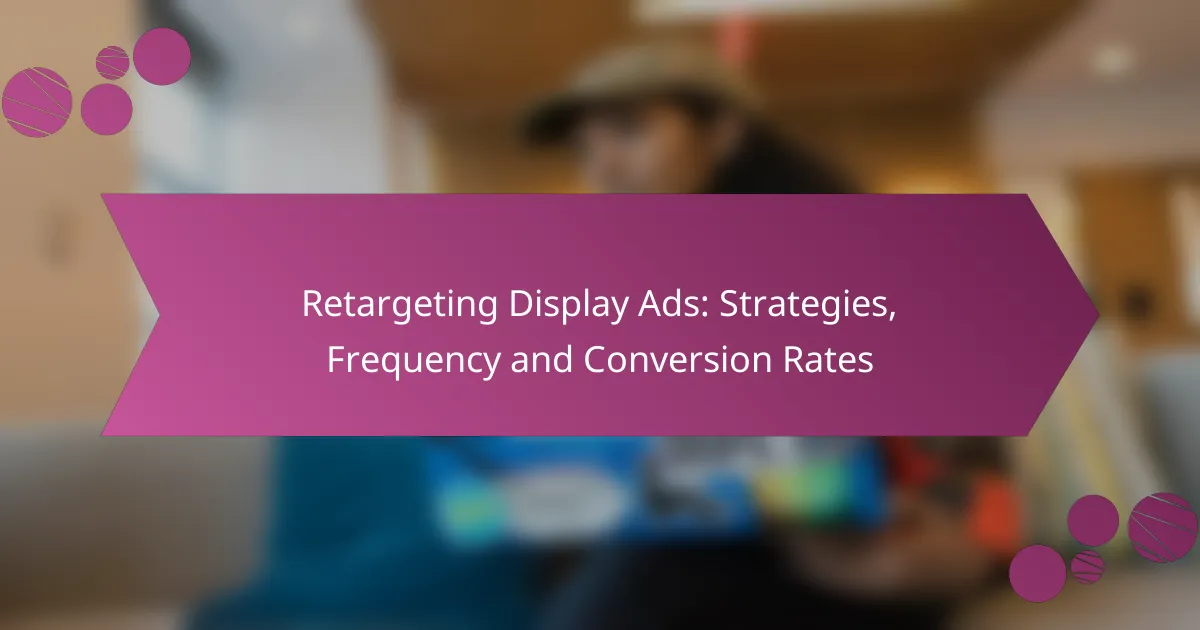Contextual targeting is a powerful strategy in display advertising that aligns ads with the content users are currently viewing, significantly boosting user engagement. By focusing on relevant content that resonates with the audience, advertisers can enhance the effectiveness of their campaigns. Utilizing advanced tools that analyze content and user behavior further optimizes this approach, ensuring that ads are not only relevant but also engaging.

How does contextual targeting improve display advertising in Ireland?
Contextual targeting enhances display advertising in Ireland by delivering ads that align with the content users are currently viewing. This approach increases the likelihood of user engagement and improves overall ad effectiveness.
Increased relevance for users
Contextual targeting ensures that ads are displayed alongside content that is relevant to the user’s interests. For instance, if a user is reading an article about travel, they may see ads for airlines or hotels, making the ads more pertinent and appealing.
This relevance not only captures attention but also fosters a more positive user experience, as users are less likely to be annoyed by irrelevant ads. Advertisers can leverage this by selecting specific keywords or topics that resonate with their target audience.
Higher engagement rates
When ads are contextually aligned with the content, users are more likely to interact with them. Engagement rates can increase significantly, often reaching double digits, compared to traditional display ads that lack contextual relevance.
For example, a campaign promoting outdoor gear may see higher click-through rates when ads appear on outdoor adventure blogs rather than unrelated sites. This targeted approach encourages users to take action, whether it’s clicking on the ad or making a purchase.
Enhanced ad performance metrics
Contextual targeting can lead to improved performance metrics, such as higher conversion rates and lower cost per acquisition. By focusing on relevant content, advertisers can optimize their budgets and achieve better returns on investment.
In Ireland, advertisers should monitor key performance indicators like click-through rates and conversion rates to assess the effectiveness of their contextual targeting strategies. Regular analysis allows for adjustments that can further enhance ad performance and maximize campaign success.

What are the best practices for implementing contextual targeting?
To effectively implement contextual targeting, focus on aligning your ads with relevant content that resonates with your audience. This approach enhances engagement and improves the overall effectiveness of your display advertising campaigns.
Utilizing keyword analysis
Keyword analysis is crucial for identifying the terms and phrases that your target audience uses. By researching high-traffic keywords related to your product or service, you can create ads that are more likely to appear alongside relevant content. Tools like Google Keyword Planner can help you discover popular keywords and their search volumes.
When selecting keywords, consider both short-tail and long-tail options. Short-tail keywords may attract a larger audience, while long-tail keywords can lead to higher conversion rates due to their specificity. Aim for a balanced mix to maximize your reach and relevance.
Leveraging content categorization
Content categorization involves classifying web pages into specific topics or themes, which helps in placing ads where they will be most relevant. Use content management systems or ad networks that offer categorization features to ensure your ads are displayed alongside appropriate content. This increases the likelihood of user engagement.
Consider using a tiered approach to categorization, where you identify primary and secondary categories for your ads. This allows for more flexible targeting and can help you reach niche audiences effectively. Regularly review and update your categories based on performance metrics to optimize your campaigns.
Employing real-time data
Real-time data is essential for making informed decisions about contextual targeting. By analyzing user behavior and content performance as it happens, you can adjust your ad placements dynamically. This responsiveness can significantly enhance engagement rates.
Utilize analytics tools that provide insights into user interactions and content trends. For instance, tracking metrics such as click-through rates and time spent on pages can inform your targeting strategies. Be prepared to pivot your approach based on this data to maintain relevance and effectiveness in your campaigns.

What tools are effective for contextual targeting in display advertising?
Effective tools for contextual targeting in display advertising include platforms that analyze content and user behavior to display relevant ads. These tools help advertisers reach audiences based on the context of the content they are engaging with, enhancing relevance and engagement.
Google Ads
Google Ads offers contextual targeting options that allow advertisers to display ads on websites that match their chosen keywords or topics. By selecting relevant keywords, advertisers can ensure their ads appear alongside content that aligns with their brand, increasing the likelihood of user engagement.
To optimize contextual targeting with Google Ads, consider using the “Display Network” to reach a wider audience. Monitor performance metrics like click-through rates (CTR) to refine your keyword choices and improve ad placements.
AdRoll
AdRoll specializes in retargeting and contextual advertising, providing tools to display ads based on user behavior and content relevance. It uses machine learning to analyze user interactions and optimize ad placements across various platforms.
When using AdRoll, focus on creating visually appealing ads that resonate with the content context. Regularly review performance data to adjust targeting strategies and maximize return on investment (ROI).
Taboola
Taboola is a content discovery platform that leverages contextual targeting to place ads within relevant articles and videos. It helps brands reach audiences by displaying sponsored content that aligns with users’ interests and the surrounding content.
To effectively use Taboola, ensure your content is engaging and informative to encourage clicks. Test different headlines and images to see what resonates best with your target audience, and analyze engagement metrics to refine your approach.

How does relevance impact user engagement in display ads?
Relevance significantly enhances user engagement in display ads by ensuring that the content resonates with the audience’s interests and needs. When ads are contextually aligned with what users are currently viewing or searching for, they are more likely to capture attention and encourage interaction.
Improved click-through rates
Relevant display ads typically see improved click-through rates (CTR) because they align with users’ immediate interests. For example, a user reading about fitness is more likely to click on an ad for sports gear than one for unrelated products. This targeted approach can lead to CTR increases of several percentage points compared to generic ads.
To maximize CTR, advertisers should utilize data analytics to understand audience preferences and tailor their messaging accordingly. A/B testing different ad creatives can also help identify which versions resonate best with specific segments.
Lower bounce rates
When display ads are relevant, users are less likely to leave the landing page immediately after clicking, resulting in lower bounce rates. A well-targeted ad leads to a more cohesive user experience, where the content meets the expectations set by the ad. This can keep users engaged longer, often leading to further exploration of the site.
To reduce bounce rates, ensure that the landing page content is consistent with the ad’s message. Clear calls-to-action and easy navigation can also help maintain user interest and encourage deeper engagement.
Increased brand recall
Relevance in display advertising contributes to increased brand recall, as users are more likely to remember brands that provide meaningful and contextually appropriate messages. Ads that resonate with users’ interests can create a lasting impression, making them more likely to consider the brand in the future.
To enhance brand recall, focus on creating visually appealing ads with strong messaging that connects with the target audience’s values. Consistent branding across multiple touchpoints can reinforce recognition and familiarity, leading to higher chances of conversion down the line.

What metrics measure the effectiveness of contextual targeting?
Effectiveness in contextual targeting is primarily measured through conversion rates, engagement metrics, and return on ad spend (ROAS). Each of these metrics provides insights into how well ads resonate with the audience and drive desired actions.
Conversion rates
Conversion rates indicate the percentage of users who take a desired action after interacting with an ad. This could include making a purchase, signing up for a newsletter, or downloading an app. A higher conversion rate suggests that the contextual targeting is successfully reaching the right audience.
To improve conversion rates, focus on aligning ad content with the context in which it appears. For example, an ad for outdoor gear on a hiking blog is more likely to convert than the same ad on an unrelated site. Regularly analyze and adjust targeting parameters to optimize performance.
Engagement metrics
Engagement metrics track how users interact with ads, including click-through rates (CTR), time spent on the landing page, and social shares. High engagement often correlates with effective contextual targeting, as it indicates that the audience finds the content relevant and appealing.
Consider using A/B testing to compare different ad formats and placements. For instance, video ads might generate more engagement than static images in certain contexts. Monitoring these metrics helps refine targeting strategies and enhance user interaction.
Return on ad spend
Return on ad spend (ROAS) measures the revenue generated for every dollar spent on advertising. A positive ROAS indicates that the investment in contextual targeting is yielding profitable results. Businesses typically aim for a ROAS of at least 3:1, meaning three dollars in revenue for every dollar spent.
To maximize ROAS, continuously evaluate the performance of different ad placements and contexts. Adjust budgets towards the highest-performing campaigns and consider seasonal trends that may affect consumer behavior. This proactive approach can significantly enhance the overall effectiveness of your advertising strategy.

What challenges exist in contextual targeting for display advertising?
Contextual targeting in display advertising faces several challenges, primarily related to data privacy, ad relevance, and user engagement. Advertisers must navigate regulations while ensuring their ads are contextually appropriate and resonate with the target audience.
Data privacy regulations
Data privacy regulations significantly impact contextual targeting by limiting how advertisers can collect and use consumer data. Laws such as the General Data Protection Regulation (GDPR) in Europe and the California Consumer Privacy Act (CCPA) in the United States impose strict guidelines on data handling, requiring transparency and user consent.
Advertisers must adapt their strategies to comply with these regulations, which can involve using first-party data or contextual signals instead of relying on third-party cookies. This shift may require a deeper understanding of the content surrounding ads to ensure relevance without infringing on privacy.
To navigate these regulations effectively, advertisers should regularly review compliance requirements and consider investing in privacy-focused tools that enhance contextual targeting while respecting user rights. Staying informed about evolving laws can help mitigate risks and maintain consumer trust.









